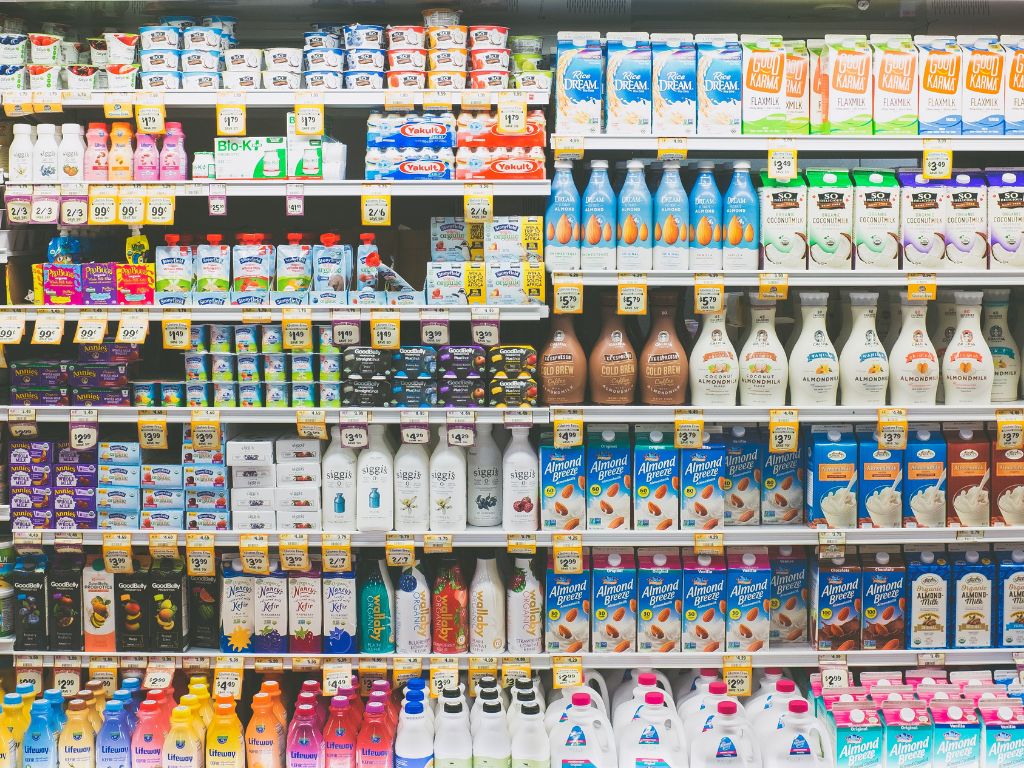$8 Billion U.S. Plant-Based Food Sector Shows ‘Momentum and Resilience’, PBFA Report Finds
5 Mins Read
In its State of the Marketplace 2022 Summary Report, the Plant Based Foods Association takes a deep dive into the category and identifies key trends ahead.
Despite inflation over the last year and lackluster sales for several plant-based category leaders that dipped the sector by 3 percent, 2022 still saw growth, the Plant Based Foods Association (PBFA) says in its latest industry report. Overall, U.S. plant-based food sales grew 6.6 percent, bringing the category to $8 billion for the year.
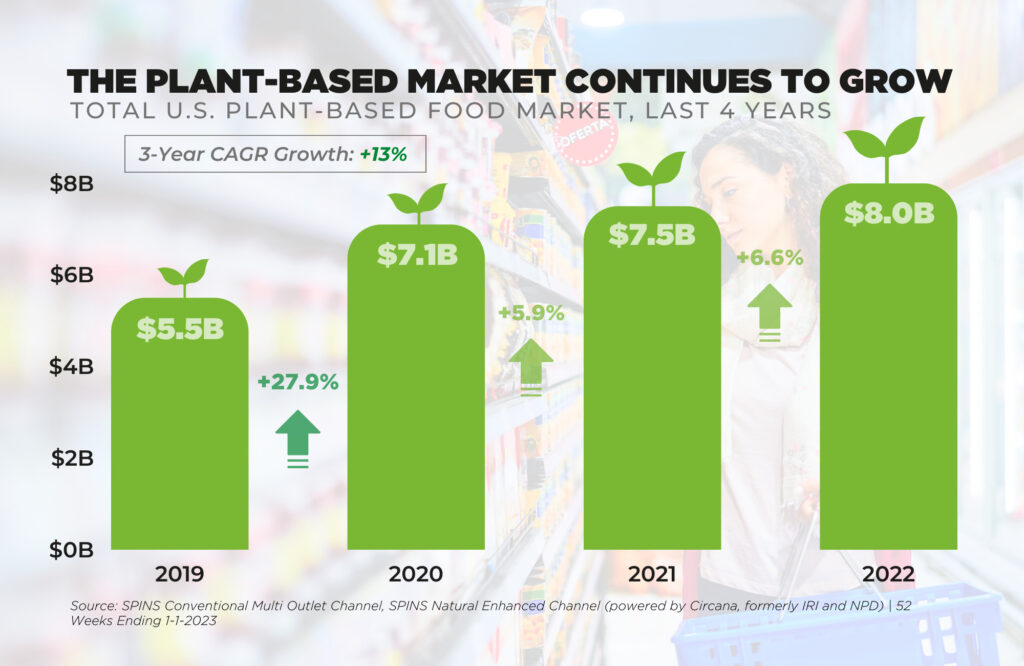
“The plant-based foods industry’s momentum and resilience – built on robust consumer demand – is evident across 2022 retail and e-commerce sales and foodservice performance,” Julie Emmett, PBFA Vice President of Marketplace Development, said in a statement.
“We know consumer interest is strong, now it’s a matter of continuing to increase access and awareness for existing and future innovative plant-based options and furthering the exciting potential of this industry,” Emmett said.
The findings
The rise in plant-based sales comes from the increasing adoption by mainstream, flexitarian consumers, the report says. Sixty percent of total U.S. households are now regularly purchasing plant-based alternatives to conventional animal products, with 80 percent repeating those purchases.
This increase in plant-based purchases comes as animal-based food sales have declined, PBFA says, with plant-based seeing particularly noteworthy growth across eggs, protein powder, coffee creamer, RTD beverages, and dips and spreads. The categories driving the bulk of sales continue to be milk, followed by meat, creamer, ready-meals, and ice cream.
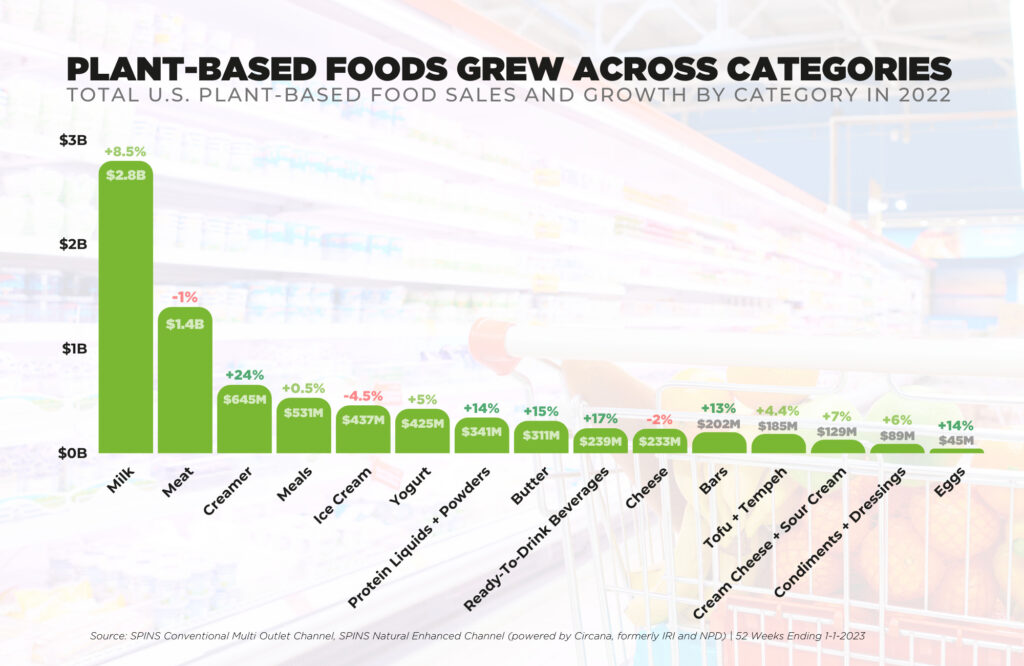
“The variety of standout categories speaks to the expansion of consumer interest in plant-based options for every eating occasion, from post-workout smoothies to morning coffee to indulgent meals,” PBFA notes.
As the sector leader, plant-based milk is now in more than 40 percent of U.S. homes, the report finds, accounting for 15 percent of all fluid milk sales, with 75 percent of those consumers repeat buyers. The vegan milk category grew nine percent to $2.8 billion in 2022.
“Against a backdrop of heavy inflation, plant-based milk units declined by two percent,” the report notes. “As consumers stretched their dollar across total food sales, the price gap between plant-based milk and animal-based milk impacted overall purchasing. In comparison, animal-based milk was also down two percent in units, but saw a 12 percent increase in dollar sales, illustrating the outsized role of inflated
pricing in growing sales figures for animal-based milk.”
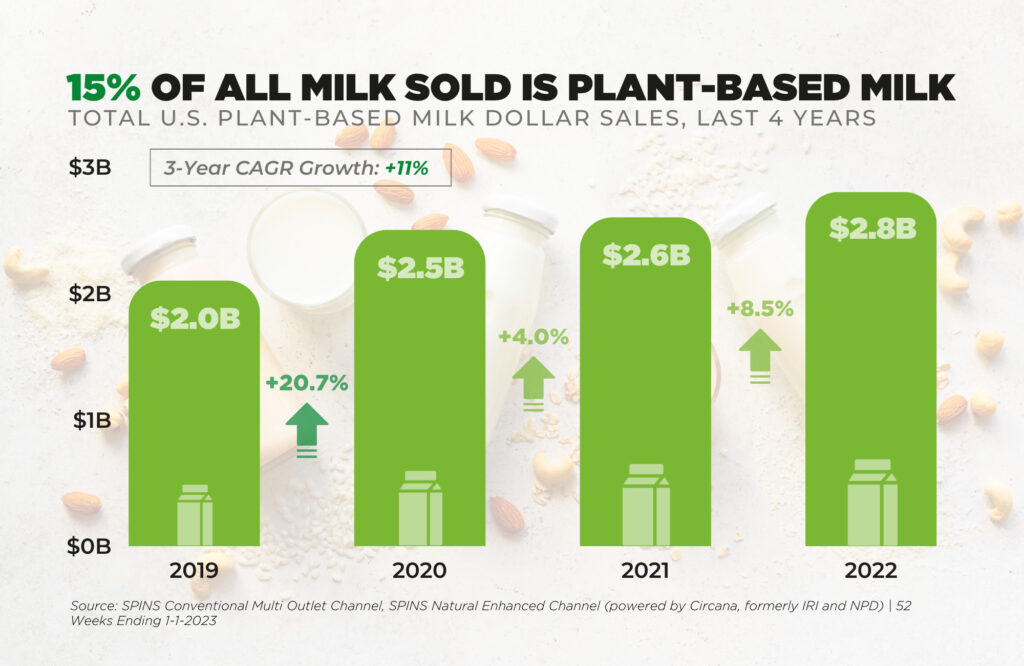
While vegan meat sales remained steady over 2021 numbers, the report notes the category is diversifying, with vegan chicken driving the bulk of sales. The frozen vegan meat category grew by five percent and shelf-stable options grew by more than 80 percent while refrigerated saw a 13.5 percent decline. “Many plant-based meat segments — such as filets; steaks; cutlets and jerky snacks; and nuggets, tenders, and wings — are growing in both dollars and units, while plant-based chunks and strips, deli slices, and meatballs are growing in dollar sales, demonstrating consumer adoption of many different varieties of plant-based meat,” reads the report.
The future of plant-based
It’s not just consumers stocking vegan options in their refrigerators that drove the growth; the report shows 48 percent of U.S. restaurants now offer plant-based or vegan menu options, “a percentage that has grown steadily, without decline, over the past decade.”
Online sales also increased for plant-based foods, accounting for 6.4 percent of total online sales, compared to 4.5 percent in grocery retail.
“In recent years, we’ve noticed more and more people embracing a conscious way of living,” says Heather Brand, Thrive Market’s senior category manager. “Consumers are more mindful of their impact on the environment, their health, and animal welfare. This has led to a surge in popularity of plant-based foods and products, as people look for healthier and more sustainable options.”
In just the five years since the PBFA began reporting on the sector, it says the sector has gone from six categories to 20, and growth is expected to continue.
“The plant-based foods industry has proven its resilience, weathering unprecedented challenges to maintain cross-category market shares and achieve $8 billion in U.S. retail sales,” says Rachel Dreskin, PBFA CEO.
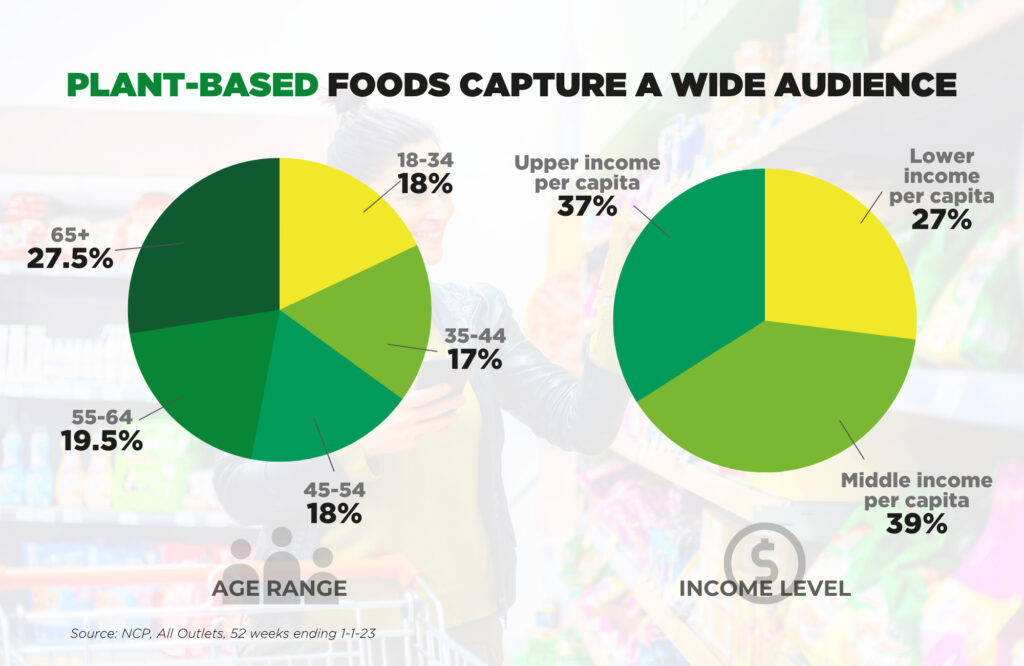
“This success is a testament to the dedication of consumers who are looking for plant-based options for every eating occasion, and the innovative brands and marketplace partners who are working to meet growing demand for sustainable, healthy, and delicious options,” Dreskin said.
PBFA, which worked with the think tank nonprofit The Good Food Institute to analyze the sales data, also found that while inflation affected every segment of the food industry in 2022, the average retail price of animal-based foods increased more than plant-based options. The animal sector increased by an average of 15 percent, while plant-based foods saw only a ten percent spike.
Despite the economic and environmental benefits of increasing plant-based food, consumers are still largely motivated by health, the report found. The environment is the second motivating factor followed by animal welfare.
Seventy-three percent of consumers consider themselves health-conscious, says PBFA, but they’re still motivated by taste and affordability. Younger consumers, particularly Gen Z, are aiming to reduce their carbon footprint, with 79 percent going meat-free one day per week and 65 percent wanting a more plant-forward diet.
“While there is still much to be done by food system stakeholders to sustain and accelerate the momentum of the plant-based foods industry,” PBFA says, “the findings of this report affirm our confidence as an organization and an industry that we, collectively, are on the right path.”

